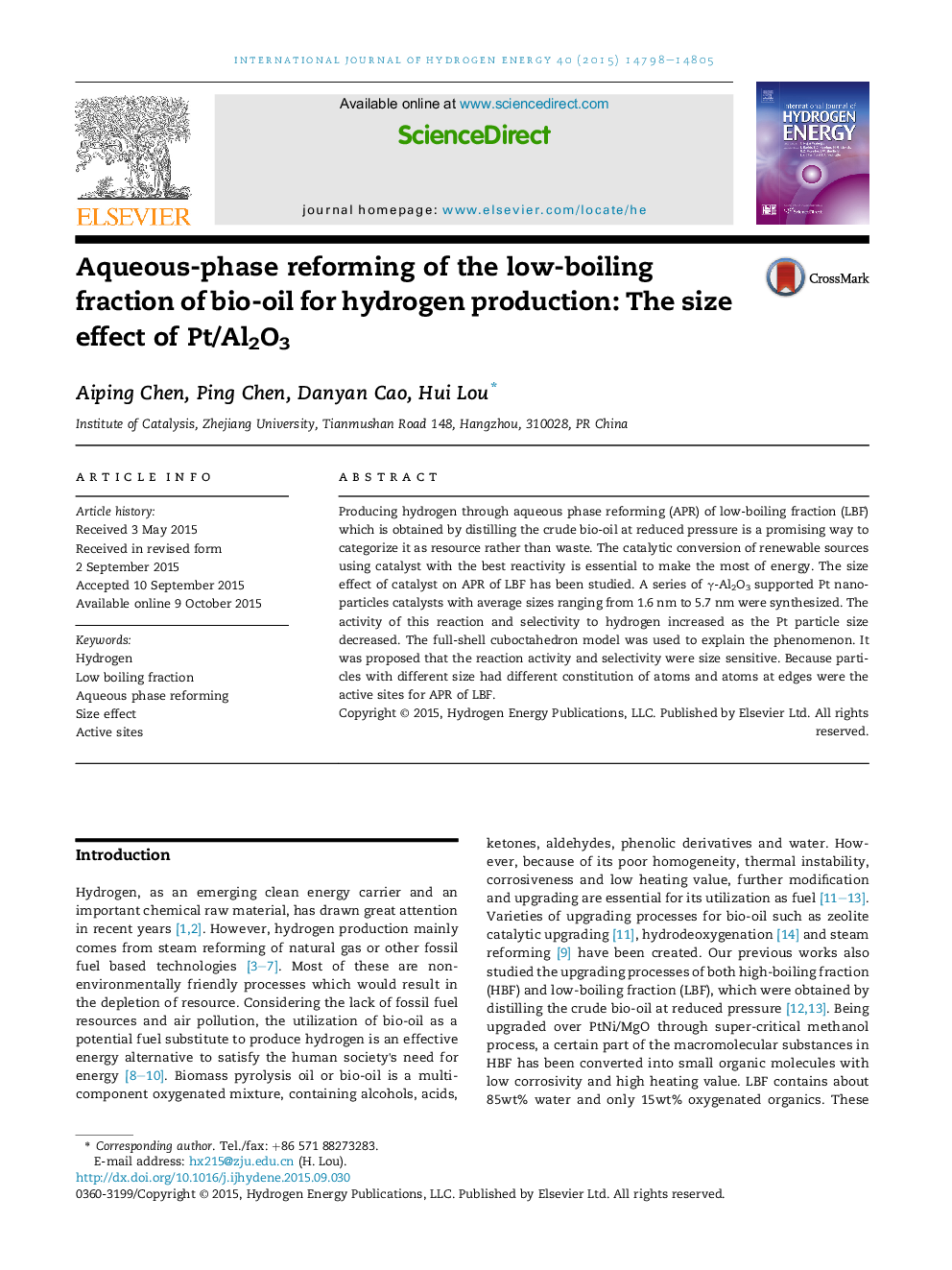| Article ID | Journal | Published Year | Pages | File Type |
|---|---|---|---|---|
| 1274249 | International Journal of Hydrogen Energy | 2015 | 8 Pages |
•Aqueous phase reforming of low-boiling fraction is size sensitive.•With 1.6 nm Pt/Al2O3 as catalyst, 757 ml gas was produced and the selectivity of hydrogen reaches up to 65.86 vol.%.•The Pt atoms at vertexes and edges are active sites by providing stable Pt–C bonds and facilitating the cleavage of C–C bonds.
Producing hydrogen through aqueous phase reforming (APR) of low-boiling fraction (LBF) which is obtained by distilling the crude bio-oil at reduced pressure is a promising way to categorize it as resource rather than waste. The catalytic conversion of renewable sources using catalyst with the best reactivity is essential to make the most of energy. The size effect of catalyst on APR of LBF has been studied. A series of γ-Al2O3 supported Pt nanoparticles catalysts with average sizes ranging from 1.6 nm to 5.7 nm were synthesized. The activity of this reaction and selectivity to hydrogen increased as the Pt particle size decreased. The full-shell cuboctahedron model was used to explain the phenomenon. It was proposed that the reaction activity and selectivity were size sensitive. Because particles with different size had different constitution of atoms and atoms at edges were the active sites for APR of LBF.
